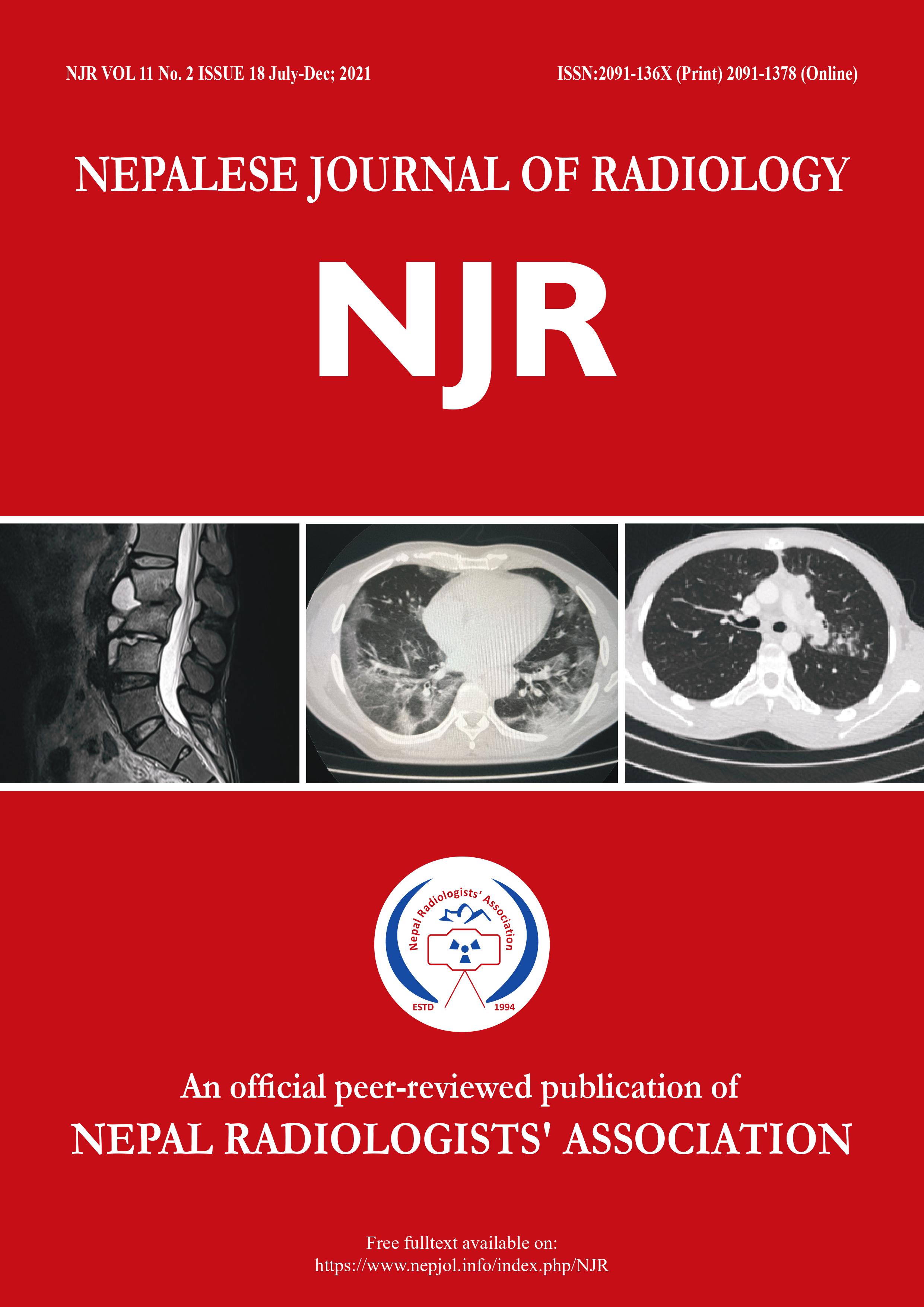Diagnostic accuracy of color doppler Ultrasonography and FNAC in differentiating benign and malignant cervical lymphadenopathies at Birat Medical College Teaching Hospital, Morang, Nepal
DOI:
https://doi.org/10.3126/njr.v11i2.41215Keywords:
Cervical lymphadenopathy; Colour Doppler UltrasonographyAbstract
Introduction: Among various imaging modalities useful in diagnosis of cervical lymphadenopathies, Color Doppler ultrasound (CDUS) is useful to evaluate and determine the presence of vascularity, resistance, direction, and velocity of blood flow in lymph nodes. It can determine the morphological and vascular nature of lymphadenopathies which will further help in the differentiation between benign and malignant nodes.
Methods: This study was conducted on 61 patients referred to the Department of radiodiagnosis and imaging of BiratMedcical College for an ultrasound of cervical lymphadenopathy. These patients had subsequently undergone FNAC examination. Color Doppler sonographic procedures were done with an 11L linear probe with a frequency of 4.5-12MHz and CDUS evaluation of lymph nodes for Resistive Index and Peak systolic velocity were carried out and correlated with FNAC findings.
Results: Among 61 lymph nodes, 52 were benign and 9 were malignant in the Color Doppler study where the final diagnosis by FNAC showed 53 benign and 8 malignant nodes. RI above the cutoff value of 0.5 had 83.3% sensitivity, 79.6% specificity, 50% PPV and 95.1% NPV. PSV above the cutoff value of 16cm/sec had 66.6% sensitivity, 95.9% specificity, 80.0% PPV and 92.2% NPV with diagnostic accuracy of 91.8%.
Conclusion: Morphological features of the nodes such as shape, absence of echogenic hilum, abnormal vascular pattern, and Doppler indices cutoff values of 0.5 and 16cm/s respectively for RI and PSV were sensitive and specific for the diagnosis of malignant lymph nodes.
Downloads
Downloads
Published
How to Cite
Issue
Section
License
Copyright (c) 2022 Nepalese Journal of Radiology

This work is licensed under a Creative Commons Attribution 4.0 International License.
This license enables reusers to distribute, remix, adapt, and build upon the material in any medium or format, so long as attribution is given to the creator. The license allows for commercial use.




